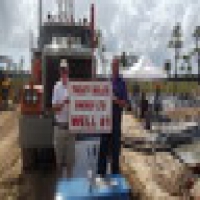Exhibit 5 - Despite hefty price tag, Tesla Model S
Post# of 162
Subsidies
When asked about subsidies, Mr. Hu said that the Central government has already paid Kandi JV subsidies through the first quarter of 2014. Subsidies for the quarter ending in June was supposed to be paid in July, but it was delayed. The subsidy check of 200M RMB (approximately $32.6 million) finally arrived to the local government in early November, and should get to the JV anytime now. The Central government still owes the JV a subsidy check for the third quarter.
Regarding local subsidies, Mr. Hu mentioned ZZY has never got paid from Hangzhou or Shanghai governments. Hangzhou subsidy policy is still waiting to be approved. Once it get approved, the buildup in Hangzhou will resume. The proposed amount of Hangzhou subsidy is very similar to that of the Central government. He confirmed Kandi will deliver one thousand EVs to Chengdu in December. Nanjing process might take a while, therefore the delivery timeframe is not yet determined.
Mr. Hu mentioned that out of the 86 pilot cities, about two-third of those cities have approached Kandi JV to discuss about Car-Share deployment in their cities. He said that in order for Kandi to work with them, besides local subsidies, the cities must also provide free "green lands" to build Car-Share stations. Street Car-Share stations is much preferred over vertical parking garages because they're much faster to build and cost a lot less.
(click to enlarge)
Exhibit 6 - Subsidies and tax break incentive
Outlook
From time to time when asked, Mr. Hu hinted about the short-term and long-term outlook. About Hangzhou, he said more Car-Share stations will be built after Hangzhou subsidy is announced. He expects more Car-Share announcements will be made with new cities, even though "government process can take a long time". For now, monthly production of 2,000 EVs is likely. "It will take between one and two years for Kandi JV to begin producing 100,000 EVs per year", he said.
Conclusion
Mr. Hu is very concerned about the manipulation and the volatility of KNDI. During the meeting he asked for suggestions and feedback from attendees. Valuable feedbacks were collected, including transparency, suggestion that Kandi hold earnings release conference calls , provides quarterly guidance, gain industry analyst coverage, and increase institutional ownership.
Mr. Hu is very confident about the future of Kandi. He envisions 2015 will be the transition year for the company, more Car-Share cities, more government support, and a broader range of PEVs. The new cars contain high-tech features, utilize advanced batteries with driving range of 300 miles per charge, targeting upper middle class. These cars will likely be sold directly to Chinese consumers, with opportunities to be marketed overseas. This is why Kandi confidently mentioned in the Form 10-Q that its new products will be "massively competitive".
The JV will likely market the City models domestically and also overseas, which Geely has lots of expertise. This means the JV function will expand beyond the Car-Share business, into selling directly to domestic and overseas customers.
Mr. Hu mentioned the current five-year plan calls for half a million EVs on the road by the end of 2015. By the end of 2020, five million EVs will be on the road in China. Kandi's PEV share of the market is expected to increase exponentially.
 (0)
(0) (0)
(0)